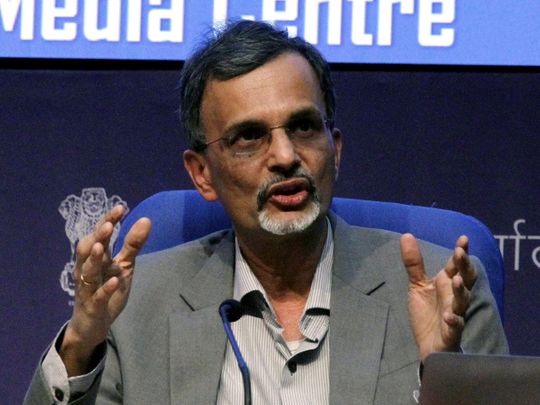
Today is budget day in India. With the crucial state assembly elections coming up later in the month and just a couple of days before the unveiling of the union budget, the Narendra Modi government announced the appointment of Dr Venkatraman Anantha Nageswaran as India’s Chief Economic Advisor (CEA) in the Ministry of Finance. Both the timing of the announcement and the person so appointed are considered significant.
Since the last CEA, Dr Krishnamurthy Subramanian, stepped down on Oct. 8, 2021, the post was lying vacant. Earlier, his predecessor, Dr Arvind Subramanian, also resigned in June 2018, a few months before the end of his one year extension. After quitting, in a book called Of Counsel: The Challenges of the Modi-Jaitley Economy, Arvind Subramanian famously stated that the position of the CEA carried no executive responsibility. Moreover, his advice was seldom followed by the political top brass.
One cannot be sure whether Subramanian was being entirely disingenuous or merely discourteous given that he had served a full term of three years from 2014 to 2017 and received a year’s extension. But his own discomposure and distress with the present dispensation were evident.
Economic Survey of India
While it is true that the primary, if not only, well-defined responsibility of the CEA, is to produce the Economic Survey of India, which is presented in the Parliament before the Union Budget, CEAs have wielded enormous, if varied, clout.
This year's economic survey of India was done under the supervision of the Principal Economic Adviser, Sanjeev Sanyal.
In the past, starting with independent India’s first CEAs J. J. Anjaria (1956-1961) and I.G. Patel (1961-1967) right up to Dr Kaushik Basu (2009-2012) and Dr Raghuram Rajan (2012-2013), both of whom served under former prime minister Manmohan Singh, the CEA has often been one of the government’s most significant, if not visible, face when it comes to economic policy and planning. CEAs have been internationally renowned economists, usually with degrees from abroad. In fact, Dr Manmohan Singh himself served as former prime minister Indira Gandhi’s CEA from 1972-1976.
No surprise, then, that the present incumbent is eminently suited to the job. A PhD in Economics from University of Massachusetts at Amherst, with a doctoral dissertation on “Empirical Behaviour of Exchange Rates,” he also has an MBA from India’s top-ranked business school, the Indian Institute of Management-Ahmedabad. He has been associated with many academic institutions in Singapore and India, including a stint as the Dean of Krea University’s IFMR Graduate School of Business.
Nageswaran was a currency economist at the Union Bank of Switzerland, head of research and investment consulting at Credit Suisse Private Banking in Asia, and head of Asia research and global chief investment officer at Bank Julius Baer. In addition, he has been company director in Sundaram Fasteners and TVS Sri Chakra and adviser to Indicus Foundation on Financial Inclusion.
A well-known economist
A well-known financial columnist, Nageswaran is the co-author of Economics of Derivatives, Can India Grow? and The Rise of Finance: Causes, Consequences and Cures. Having already been a member of the Prime Minister’s Economic Advisory Council (PMEAC) from 2019 to 2021, Nageswaran has been a part of the policy, planning, and consultative process of the Modi government.
The Economic Survey of India, which the CEA is tasked with preparing, was first presented for the year 1950-1951, soon after India became a republic. Subsequently, since 1964, it is presented separately and before the budget session. While it is a non-binding document, it indicates, with facts and figures, the state of the nation’s economy and major policy priorities of the government.
Apart from populist expectations, especially sops to appease the protesting farmers, this year’s budget also faces inequality challenges, job losses, a contraction of economic activity, and rising inflation — all due to the Covid19 pandemic and its fallout.
Earlier last year, when I was Director of the Indian Institute of Advanced Study, Shimla, I had the privilege of inviting Dr Nageswaran to speak in our Distinguished Webinar Series. Just before the worst of the devastating second wave of the pandemic, he had bravely forecast that “the Indian economic glass is more than half-full.”
India's major structural reforms
Now, with major structural reforms and cleaning up of bad debts in the banking sector, it does seem as if India’s economy is poised for another growth spurt as it recovers from the after-effects and shocks of the pandemic.
Apart from inflation, the real concern is under- or unemployment and forced immiseration, with some estimates such as Oxfam’s flagging the doubling of the very poor in India from 50 to 100 million in this period. At such a time, subsidies and deficits can pose a threat to fiscal prudence and robustness.
After the setback to the reform of the agricultural sector and the reluctant repeal of the farm laws, Nageswaran had observed in Dec. 7, 2021 column in Mint, “Policymakers have to anticipate the grievances of losers and prepare mitigation strategies and responses in advance. … This is sound policymaking with risk management, for a setback in one field of policy reform could have a contagion effect on other reforms and governance in general.”
Sage advice indeed. Good advice is always hard to find. It is even harder to heed, given the overriding political compulsions of a complex democracy, with its repeated, asymmetrical, and non-simultaneous state and central elections.
Those who know Nageswaran, regardless of which political party or ideology they subscribe to, can vouch that his he is a balanced, sane, well-informed, and competent voice. One can only hope that his term as CEA is more successful and beneficial to the nation than that of his two predecessors.









